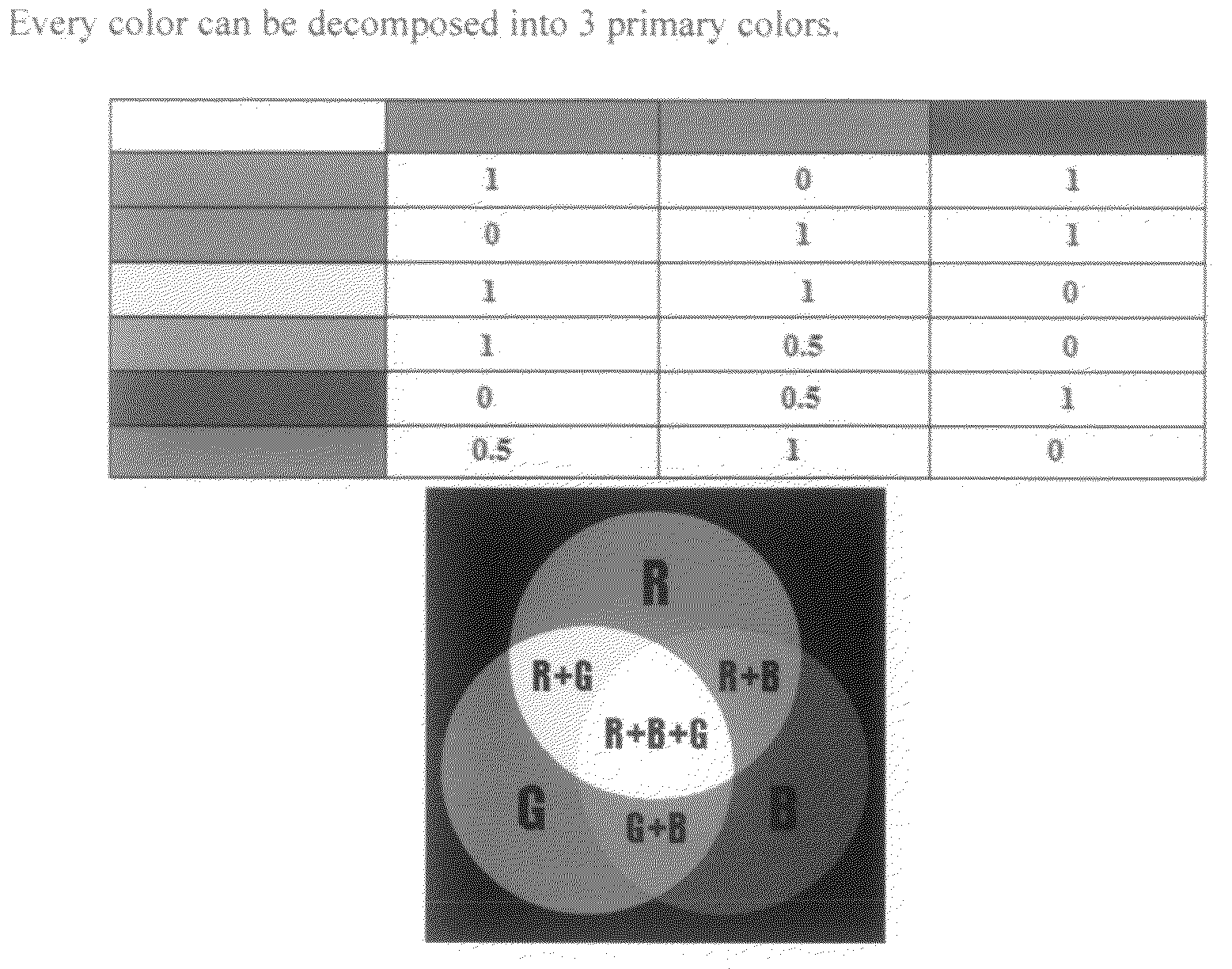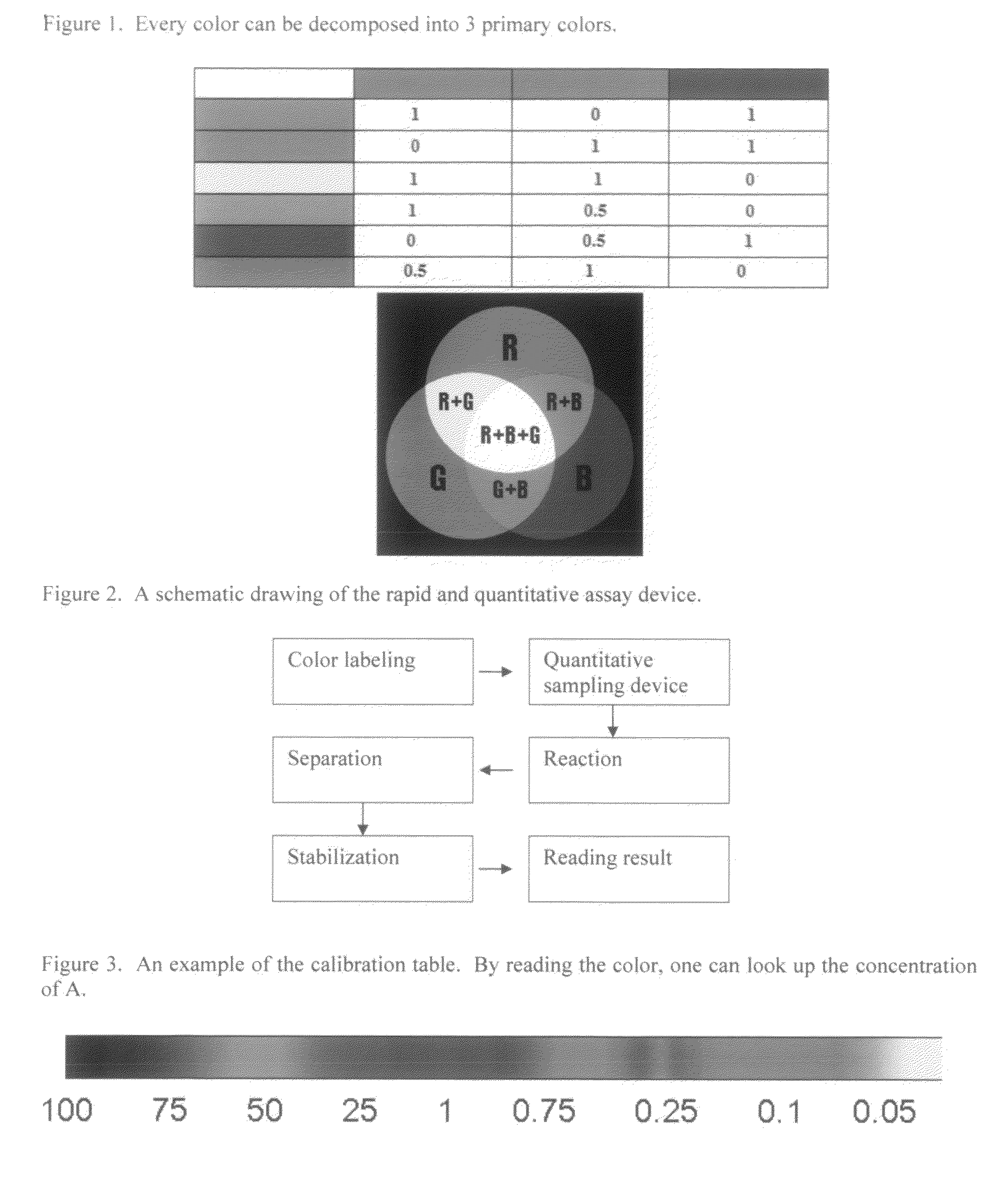Method for rapid and quantitative assay using primary color principle
- Summary
- Abstract
- Description
- Claims
- Application Information
AI Technical Summary
Benefits of technology
Problems solved by technology
Method used
Image
Examples
Embodiment Construction
[0016]Provided herein is a fluid specimen assay method. In this method, the system contains 6 steps (FIG. 2).
1) Color Labeling
[0017]The first step is to label the substrates which will bind the interested chemical with color. For example, one may label such substrates with dye, fluorescence, bead, gold, or latex, etc. If the substrates have color already, this step may be omitted.
2) Quantitative Sampling
[0018]The second step is quantitative sampling, i.e., taking a fixed amount of specimen which will participate the reaction. This step is necessary to achieve quantitative measurement of the interested chemicals.
3) Reaction Phase:
[0019]The third step is reaction. A container contains the colored substrates. These substrates are able to bind with the interested chemicals with different binding constant. Let's say the substrates are A, B and C, etc and the interested chemical is X. The colors of A, B, and C are red, green, and blue, respectively. Assuming the binding constant between A...
PUM
 Login to View More
Login to View More Abstract
Description
Claims
Application Information
 Login to View More
Login to View More - R&D Engineer
- R&D Manager
- IP Professional
- Industry Leading Data Capabilities
- Powerful AI technology
- Patent DNA Extraction
Browse by: Latest US Patents, China's latest patents, Technical Efficacy Thesaurus, Application Domain, Technology Topic, Popular Technical Reports.
© 2024 PatSnap. All rights reserved.Legal|Privacy policy|Modern Slavery Act Transparency Statement|Sitemap|About US| Contact US: help@patsnap.com









